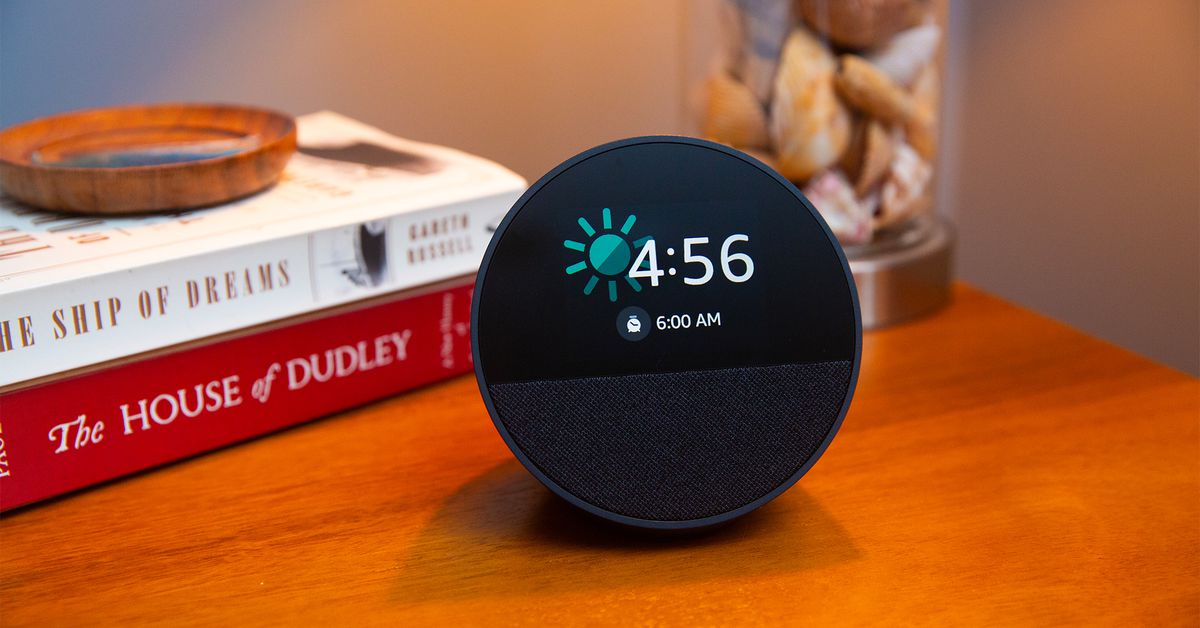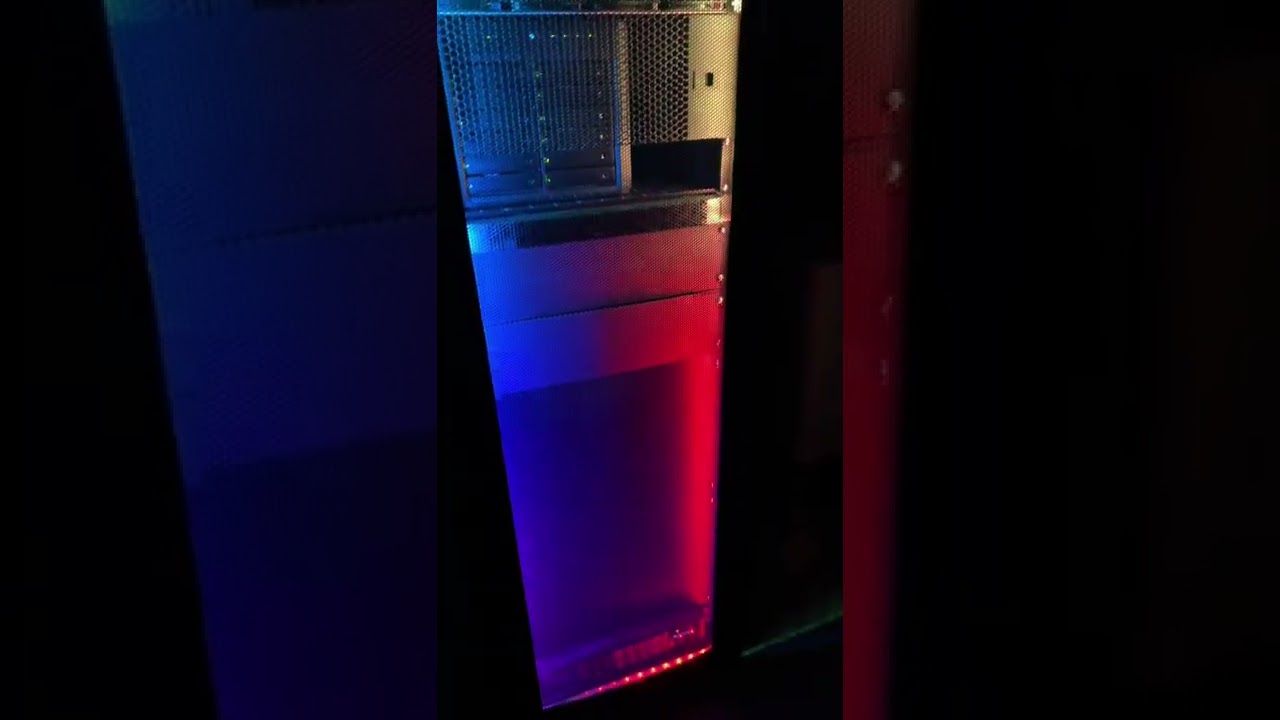Technology
Amazon Prime Day 2024: the best tech deals under $50

Once again, Amazon is holding a second Prime Day under the guise of Prime Big Deal Days, which runs through tomorrow, October 9th. While the naming convention might be terrible, the sale isn’t. In fact, many of our favorite gadgets and goods are receiving notable discounts right now, which we’ve highlighted in our larger roundup of the best Prime Day deals. However, if you’re looking to stick to a budget, here’s where you’ll find our top picks under $50.
We’ll be updating this post as Amazon’s latest Prime Day event rolls on, but, in the meantime, feel free to use the table to dig below to dig into your desired category.
Technology
Best Amazon October Prime Day Gift Deals 2024

With the second Prime Day of 2024 now underway, it’s a good time to get a head start with your holiday shopping. So in this roundup, we will be listing all of the great gifts that you can pick up right now, that are actually on sale. We’ve done the research, we’ve done the homework, and we know that these deals are actually on sale. And not artificially on sale.
As many of you might know, Amazon has a tendency to slowly raise prices weeks ahead of a big shopping event like Prime Day and then drop them on Prime Day to make it look like a huge price drop, when in actuality, it’s basically the regular price. That won’t work with us here, AndroidHeadlines, and we have found true deals available at Amazon today.
Below are all of the best gifts that you can pick up. We have split them up based on pricing, so you can grab some gifts for an office holiday party, or maybe your friends, where you are looking to keep your price at a certain level. We have listed the best gifts Under $25, Under $50, Under $100 and Under $250.
While it is still October, the holidays are just around the corner, and Prime Day is a great time to get your shopping started. Not to mention, there are plenty of discounts already available for many popular holiday gifts, so you might as well take advantage of them. You can also check out the Prime Day page from Amazon, as well as our huge Amazon Prime Day Deals roundup, which is being updated hourly.
Technology
Databricks Apps a toolkit that simplifies AI development

Databricks on Tuesday unveiled Databricks Apps, a suite of features that aims to make it easier for users to build customized data and AI applications.
Databricks already provides Mosaic AI, an environment that enables customers to integrate systems such as large language models (LLMs) with their enterprise’s proprietary data. Missing, however, were the capabilities to develop the actual interactive applications such as generative AI chatbots that are powered by the combination of AI systems mixed with proprietary data.
Databricks Apps adds the ability to develop applications on top of the tools previously available in Mosaic AI, enabling developers to execute the entire development and deployment process within the secure Databricks environment.
Because Databricks Apps extends what users could do with Mosaic AI and lets them develop applications without requiring third-party platforms, the new set of tools is significant, according to Donald Farmer, founder and principal of TreeHive Strategy.
“Very interesting news from Databricks,” he said. “The new Databricks Apps features take away some bothersome obstacles such as the need to spin up separate infrastructure for development and deployment. Because they can now deploy and manage apps directly in Databricks, this should be considerably easier.”
Kevin Petrie, an analyst at BARC U.S, likewise noted that Databricks Apps is an important addition for the vendor’s customers given that it adds to what they were previously able to develop with Mosaic AI.
“Companies cannot differentiate themselves competitively by simply implementing AI/ML models,” he said. “Rather, they must create differentiated applications that capitalize on their unique datasets. Databricks Apps help AI adopters take that critical step.”
Based in San Francisco, Databricks is a data platform vendor that when it was founded in 2013 was one of the pioneers of the data lakehouse storage format, combining the structured data storage capabilities of data warehouses with the unstructured data storage capabilities of data lakes.
Over the past two years, the vendor has made AI a focal point, expanding its platform to include an environment for deploying and managing traditional AI, generative AI and machine learning applications.
Databricks’ June 2023 acquisition of MosaicML for $1.3 billion was a key part of creating that environment with MosaicML’s technology now serving as the foundation for Databricks’ AI and machine learning capabilities. Subsequent acquisitions and product development initiatives, including the launch of DBRX, Databricks’ own large language model, have added functionality.
Now, Databricks Apps — available in public preview on AWS and Azure — further advances the vendor’s AI development capabilities.
Fueled by the potential of generative AI to aid data management and analytics, enterprise interest in AI is surging. One of its promises is that it can enable true natural language processing (NLP), which lets non-technical workers use analytics to inform decisions. Another part of its potential is that it can be used to generate code and automate processes, which can make data experts more efficient.
However, developing generative AI applications, including chatbots that let users query and analyze data and tools that use machine learning to take on tasks such as monitoring for data quality, is not easy.
Databricks Apps is designed to simplify application development by enabling developers to do all their work in the secure Databricks environment while still providing them with choices as they build data and AI applications.
Before Databricks Apps, Databricks customers had to use platforms from third-party vendors to complete the development of generative AI chatbots, AI-powered analytics applications and other intelligent capabilities. However, mixing proprietary data, AI systems such as LLMs and third-party development platforms risked accidental data beaches. In addition, it was expensive.
Part of what makes developing data and AI applications difficult, risky and expensive is all the movement they require. Relevant data needs to be discovered and moved out of a data storage platform to train an application. The application needs to be developed in an integrated development environment or other data science platform. And then the application needs to be moved to its host environment for deployment and management.
Databricks Apps eliminates the need for that labor intensive, expensive and risky movement.
Instead, it enables developers to build applications natively in Databricks using development frameworks including Dash, Flask, Gradio, Shiny and Streamlit. In addition, it comes with prebuilt Python templates designed to speed up the development process. However, if developers prefer to work in an integrated development environment such as Visual Studio Code or PyCharm, Databricks Apps supports that as well.
Following development, Databricks Apps eliminates the need to build infrastructures for deploying and running applications by running the applications on automatically allotted serverless compute storage within Databricks, according to the vendor. Management, meanwhile, includes security measures and governance capabilities such as access control and data lineage accessed through the Unity Catalog.
“There are some features here which are potentially very impactful,” Farmer said. “For example, the support for popular developer frameworks, which enables application developers to work with familiar tools of choice, expands the Databricks ecosystem to a new market of application developers.”
In addition, eliminating the need to develop infrastructures for managing applications is noteworthy, he continued. “The automatic provisioning of serverless compute will be significant because it enables developers to focus on building applications rather than the complex process of deploying a data architecture, which was a barrier to those who were not data specialists,” he said.
From a competitive standpoint, Databricks’ aggressive development of an environment for building, deploying and managing AI and machine learning tools over the past couple of years has differentiated it from other data platform vendors, Farmer said.
While AWS, Google Cloud, Microsoft and Snowflake have all similarly made AI a focal point of their product development, their tools for developing and managing AI models and applications are not as integrated as what Databricks has built, he continued. Databricks Apps furthers the separation between Databricks and its peers.
“Snowflake has been catching up or at least playing catch-up, but this continuous development from Databricks is very compelling,” Farmer said. “Microsoft Fabric, of course, is aiming to be a unified platform similar to Databricks, but it’s still an inferior product. Google Cloud Platform and AWS have a wide range of AI and ML services, but they’re not so deeply integrated across the platform.” Despite the additive capabilities of Databricks Apps, Petrie cautioned that the applications — in particular, generative AI applications — customers will be able to develop will not suddenly enable anyone within an organization to freely work with data.
While Databricks aims to help enterprises broaden the reach of data and AI beyond a small audience of users, training and expertise are still required to use data and AI to inform decisions and take actions based on those decisions.
“Like many vendors, Databricks aims to ‘democratize’ the consumption of data, analytics and AI,” Petrie said. “But I think users of these applications will still require significant expertise in data, AI and the business domain, depending on the use cases involved.”
While Databricks Apps extends what customers could do with Mosaic AI and demonstrates that Databricks is continuing to focus on improving its AI and machine learning development environment, the impetus for the new features came from customer feedback, according to Shanku Niyogi, the vendor’s vice president of product management. Developing and deploying internal applications has always been complex, he noted. But with enterprise interest in AI rapidly increasing, there is greater need for vendors such as Databricks to simplify developing and deploying AI applications.
“Customers … have shared that building and deploying internal data apps has historically been a complex and time-consuming process,” Niyogi said. “They specifically asked for easier ways to test new features while maintaining a secure environment. With the explosion of AI, this need has only grown.”
Databricks Apps does not end Databricks’ focus on enabling application development and deployment, according to Niyogi.
The vendor’s goal is to make data and AI available to a broad audience of users, he noted. Toward that end, Databricks plans to invest in developing new Mosaic AI features as well as adding other capabilities through partnerships. “Databricks will continue to make AI more accessible for organizations,” Niyogi said. “This includes further ways to simplify the app development process, new Mosaic AI capabilities that help teams build, deploy and measure compound AI systems, and a continued investment in a collaborative AI partner ecosystem.”
Farmer, meanwhile, said that Databricks’ focus on improving AI and machine learning workflows is appropriate. In particular, he suggested that the vendor enhance its support for developing applications for non-technical users as well as emerging AI technologies such as multimodal models.
“Multimodal will become critical over the next couple of years,” Farmer said. “I think we should also see more development for non-technical users. This release includes a first attempt at that, and no doubt this is the start of a new direction for Databricks and a very welcome one at that.”
Eric Avidon is a senior news writer for TechTarget Editorial and a journalist with more than 25 years of experience. He covers analytics and data management.New capabilities
Looking ahead
Servers computers
Upgrade Your Server Rack From 27U to 42U #subscribe #youtube #tech
Technology
Microsoft’s ill-fated Surface Duo 2 foldable recieves one final security patch

Pour one out for the Surface Duo 2. As , Microsoft has pushed out what will almost certainly go down as the device’s final software update, a security patch, ahead of its October 21 end-of-support date.
When Microsoft debuted the Surface Duo 2 in October 2021, the company pledged to provide three years of software updates for the foldable. Since then, the company has released just one platform update for the Duo 2, upgrading it from Android 11 to Android 12L. By comparison, Surface Duo users were more fortunate. They got to see their devices make the jump from Android 10 to Android 11 and then later to Android 12L. I’ll note here that the latest version of Google’s mobile operating system is .
By modern standards, the Duo 2’s run is particularly bad. Some Android manufacturers, including and , now promise to provide up to seven generations of platform updates. Consider also that Microsoft priced the Surface Duo 2 at $1,500 on release. Most of all, it’s a shame since software was always the Achilles heel of the Duo line. As Engadget Deputy Editor Cherlynn Low noted in her of the foldable back in 2021, the device offered more compelling hardware but was still plagued by an inconsistent user experience.
Of course, none of this is surprising if you’ve been following Microsoft in recent months. As the company has shifted its attention to AI, its Surface portfolio has seemingly fallen to the wayside. In fact, according to a published last year, part of the reason was because the company had canceled some of his unit’s more ambitious projects.
Servers computers
Server rack RGB lighting – What do you think?

Touchy subject, I know – but it looks SOOOO good! .
source
Technology
AI mortgage startup LoanSnap loses license to operate in Connecticut

LoanSnap, an AI-powered mortgage startup, has had its license to operate revoked in Connecticut, according to the state’s Banking Commissioner. This occurred after LoanSnap violated a consent order it had entered into with the Department of Banking in May.
The department revealed Tuesday that its consumer credit division opened an investigation that found multiple violations of state law following that prior consent order. As a result, the Department and LoanSnap entered into a new consent order on October 2 that resulted in revoking LoanSnap’s license.
The revocation comes four months after TechCrunch’s exclusive reporting about how LoanSnap became inundated with lawsuits and was evicted from its California headquarters, all while its business cratered amid sky-high interest rates.
LoanSnap founders Karl Jacob and Allan Carroll did not immediately respond to an emailed request for comment. Connecticut’s Department of Banking referred TechCrunch to the new consent order.
The Department of Banking says LoanSnap violated state law in a few ways. First, the company failed to file a change of address with the Nationwide Multistate Licensing System and Registry, the nationwide licensing system for loan originators — a change that was necessitated by the company’s eviction. LoanSnap also violated Connecticut law by failing to disclose multiple default judgements entered against the company as a result of multiple lawsuits, according to the new consent order.
Connecticut’s Department of Banking also says LoanSnap failed to craft new policies and procedures that it was supposed to implement as part of the May consent order, including making sure that unlicensed employees weren’t originating loans.
LoanSnap raised millions of dollars since its 2017 founding from the likes of Richard Branson’s Virgin Group, the Chainsmokers’ Mantis Ventures, Baseline Ventures, and Reid Hoffman. It promised to use AI to simplify the home lending process, and in 2021, it originated nearly 1,300 loans for a total value of almost $500 million, according to data filed with federal regulators
But as interest rates rose, LoanSnap’s business dried up. Recently-released data from the Consumer Financial Protection Bureau shows LoanSnap only originated 42 loans in 2023 for a combined value of $3.6 million.
-

 Womens Workouts2 weeks ago
Womens Workouts2 weeks ago3 Day Full Body Women’s Dumbbell Only Workout
-

 Science & Environment3 weeks ago
Science & Environment3 weeks agoHow to unsnarl a tangle of threads, according to physics
-

 Science & Environment3 weeks ago
Science & Environment3 weeks agoHyperelastic gel is one of the stretchiest materials known to science
-

 Technology3 weeks ago
Technology3 weeks agoWould-be reality TV contestants ‘not looking real’
-

 Science & Environment3 weeks ago
Science & Environment3 weeks ago‘Running of the bulls’ festival crowds move like charged particles
-

 Science & Environment3 weeks ago
Science & Environment3 weeks agoMaxwell’s demon charges quantum batteries inside of a quantum computer
-

 News2 weeks ago
News2 weeks agoOur millionaire neighbour blocks us from using public footpath & screams at us in street.. it’s like living in a WARZONE – WordupNews
-
News3 weeks ago
the pick of new debut fiction
-

 Science & Environment3 weeks ago
Science & Environment3 weeks agoHow to wrap your mind around the real multiverse
-

 Science & Environment3 weeks ago
Science & Environment3 weeks agoQuantum ‘supersolid’ matter stirred using magnets
-

 Science & Environment3 weeks ago
Science & Environment3 weeks agoSunlight-trapping device can generate temperatures over 1000°C
-

 Science & Environment3 weeks ago
Science & Environment3 weeks agoLiquid crystals could improve quantum communication devices
-

 Science & Environment3 weeks ago
Science & Environment3 weeks agoITER: Is the world’s biggest fusion experiment dead after new delay to 2035?
-

 Science & Environment3 weeks ago
Science & Environment3 weeks agoQuantum forces used to automatically assemble tiny device
-

 Science & Environment3 weeks ago
Science & Environment3 weeks agoPhysicists are grappling with their own reproducibility crisis
-

 Science & Environment3 weeks ago
Science & Environment3 weeks agoWhy this is a golden age for life to thrive across the universe
-

 News3 weeks ago
News3 weeks agoYou’re a Hypocrite, And So Am I
-

 Sport3 weeks ago
Sport3 weeks agoJoshua vs Dubois: Chris Eubank Jr says ‘AJ’ could beat Tyson Fury and any other heavyweight in the world
-

 Science & Environment3 weeks ago
Science & Environment3 weeks agoTime travel sci-fi novel is a rip-roaringly good thought experiment
-

 Science & Environment3 weeks ago
Science & Environment3 weeks agoLaser helps turn an electron into a coil of mass and charge
-

 Science & Environment3 weeks ago
Science & Environment3 weeks agoCaroline Ellison aims to duck prison sentence for role in FTX collapse
-

 Science & Environment3 weeks ago
Science & Environment3 weeks agoNuclear fusion experiment overcomes two key operating hurdles
-
Business1 week ago
Eurosceptic Andrej Babiš eyes return to power in Czech Republic
-

 Science & Environment3 weeks ago
Science & Environment3 weeks agoNerve fibres in the brain could generate quantum entanglement
-

 Technology1 week ago
Technology1 week ago‘From a toaster to a server’: UK startup promises 5x ‘speed up without changing a line of code’ as it plans to take on Nvidia, AMD in the generative AI battlefield
-

 Football1 week ago
Football1 week agoFootball Focus: Martin Keown on Liverpool’s Alisson Becker
-

 Science & Environment3 weeks ago
Science & Environment3 weeks agoRethinking space and time could let us do away with dark matter
-

 News3 weeks ago
News3 weeks ago▶️ Hamas in the West Bank: Rising Support and Deadly Attacks You Might Not Know About
-

 Science & Environment2 weeks ago
Science & Environment2 weeks agoX-rays reveal half-billion-year-old insect ancestor
-

 MMA1 week ago
MMA1 week agoConor McGregor challenges ‘woeful’ Belal Muhammad, tells Ilia Topuria it’s ‘on sight’
-

 News3 weeks ago
News3 weeks ago▶️ Media Bias: How They Spin Attack on Hezbollah and Ignore the Reality
-
Business1 week ago
Should London’s tax exiles head for Spain, Italy . . . or Wales?
-

 Science & Environment3 weeks ago
Science & Environment3 weeks agoA slight curve helps rocks make the biggest splash
-

 News3 weeks ago
News3 weeks agoNew investigation ordered into ‘doorstep murder’ of Alistair Wilson
-

 News3 weeks ago
News3 weeks agoIsrael strikes Lebanese targets as Hizbollah chief warns of ‘red lines’ crossed
-

 Science & Environment3 weeks ago
Science & Environment3 weeks agoFuture of fusion: How the UK’s JET reactor paved the way for ITER
-

 Science & Environment3 weeks ago
Science & Environment3 weeks agoA new kind of experiment at the Large Hadron Collider could unravel quantum reality
-

 Science & Environment3 weeks ago
Science & Environment3 weeks agoUK spurns European invitation to join ITER nuclear fusion project
-

 CryptoCurrency3 weeks ago
CryptoCurrency3 weeks agoCardano founder to meet Argentina president Javier Milei
-

 News2 weeks ago
News2 weeks agoWhy Is Everyone Excited About These Smart Insoles?
-

 Science & Environment2 weeks ago
Science & Environment2 weeks agoMeet the world's first female male model | 7.30
-

 Technology2 weeks ago
Technology2 weeks agoGet ready for Meta Connect
-

 Health & fitness1 week ago
Health & fitness1 week agoThe 7 lifestyle habits you can stop now for a slimmer face by next week
-

 Science & Environment3 weeks ago
Science & Environment3 weeks agoWhy we need to invoke philosophy to judge bizarre concepts in science
-

 CryptoCurrency3 weeks ago
CryptoCurrency3 weeks agoLow users, sex predators kill Korean metaverses, 3AC sues Terra: Asia Express
-

 Womens Workouts3 weeks ago
Womens Workouts3 weeks agoBest Exercises if You Want to Build a Great Physique
-

 Womens Workouts3 weeks ago
Womens Workouts3 weeks agoEverything a Beginner Needs to Know About Squatting
-

 News2 weeks ago
News2 weeks agoFour dead & 18 injured in horror mass shooting with victims ‘caught in crossfire’ as cops hunt multiple gunmen
-

 Technology2 weeks ago
Technology2 weeks agoRobo-tuna reveals how foldable fins help the speedy fish manoeuvre
-

 Technology1 week ago
Technology1 week agoQuantum computers may work better when they ignore causality
-

 Sport1 week ago
Sport1 week agoWatch UFC star deliver ‘one of the most brutal knockouts ever’ that left opponent laid spark out on the canvas
-

 CryptoCurrency3 weeks ago
CryptoCurrency3 weeks agoEthereum is a 'contrarian bet' into 2025, says Bitwise exec
-

 Health & fitness3 weeks ago
Health & fitness3 weeks agoThe secret to a six pack – and how to keep your washboard abs in 2022
-
Business3 weeks ago
JPMorgan in talks to take over Apple credit card from Goldman Sachs
-

 Science & Environment3 weeks ago
Science & Environment3 weeks agoQuantum time travel: The experiment to ‘send a particle into the past’
-

 Science & Environment3 weeks ago
Science & Environment3 weeks agoBeing in two places at once could make a quantum battery charge faster
-

 Science & Environment3 weeks ago
Science & Environment3 weeks agoA tale of two mysteries: ghostly neutrinos and the proton decay puzzle
-

 CryptoCurrency3 weeks ago
CryptoCurrency3 weeks agoBitcoin miners steamrolled after electricity thefts, exchange ‘closure’ scam: Asia Express
-

 CryptoCurrency3 weeks ago
CryptoCurrency3 weeks agoDorsey’s ‘marketplace of algorithms’ could fix social media… so why hasn’t it?
-

 CryptoCurrency3 weeks ago
CryptoCurrency3 weeks agoDZ Bank partners with Boerse Stuttgart for crypto trading
-

 CryptoCurrency3 weeks ago
CryptoCurrency3 weeks agoBitcoin bulls target $64K BTC price hurdle as US stocks eye new record
-

 CryptoCurrency3 weeks ago
CryptoCurrency3 weeks agoBlockdaemon mulls 2026 IPO: Report
-
News3 weeks ago
The Project Censored Newsletter – May 2024
-
Politics3 weeks ago
UK consumer confidence falls sharply amid fears of ‘painful’ budget | Economics
-

 TV2 weeks ago
TV2 weeks agoCNN TÜRK – 🔴 Canlı Yayın ᴴᴰ – Canlı TV izle
-

 Science & Environment2 weeks ago
Science & Environment2 weeks agoCNN TÜRK – 🔴 Canlı Yayın ᴴᴰ – Canlı TV izle
-

 Womens Workouts2 weeks ago
Womens Workouts2 weeks ago3 Day Full Body Toning Workout for Women
-

 Servers computers2 weeks ago
Servers computers2 weeks agoWhat are the benefits of Blade servers compared to rack servers?
-

 News2 weeks ago
News2 weeks agoUS Newspapers Diluting Democratic Discourse with Political Bias
-

 Technology1 week ago
Technology1 week agoThe best robot vacuum cleaners of 2024
-

 Politics3 weeks ago
Politics3 weeks agoTrump says he will meet with Indian Prime Minister Narendra Modi next week
-

 Sport3 weeks ago
Sport3 weeks agoUFC Edmonton fight card revealed, including Brandon Moreno vs. Amir Albazi headliner
-

 Science & Environment3 weeks ago
Science & Environment3 weeks agoHow one theory ties together everything we know about the universe
-

 News3 weeks ago
News3 weeks agoBrian Tyree Henry on voicing young Megatron, his love for villain roles
-

 Health & fitness3 weeks ago
Health & fitness3 weeks agoThe maps that could hold the secret to curing cancer
-

 Technology3 weeks ago
Technology3 weeks agoThe ‘superfood’ taking over fields in northern India
-

 Science & Environment3 weeks ago
Science & Environment3 weeks agoTiny magnet could help measure gravity on the quantum scale
-

 Science & Environment3 weeks ago
Science & Environment3 weeks agoHow do you recycle a nuclear fusion reactor? We’re about to find out
-

 CryptoCurrency3 weeks ago
CryptoCurrency3 weeks agoDecentraland X account hacked, phishing scam targets MANA airdrop
-

 CryptoCurrency3 weeks ago
CryptoCurrency3 weeks agoRedStone integrates first oracle price feeds on TON blockchain
-

 CryptoCurrency3 weeks ago
CryptoCurrency3 weeks ago‘No matter how bad it gets, there’s a lot going on with NFTs’: 24 Hours of Art, NFT Creator
-
Business3 weeks ago
Thames Water seeks extension on debt terms to avoid renationalisation
-
Business3 weeks ago
How Labour donor’s largesse tarnished government’s squeaky clean image
-
Politics3 weeks ago
‘Appalling’ rows over Sue Gray must stop, senior ministers say | Sue Gray
-

 News3 weeks ago
News3 weeks agoBrian Tyree Henry on voicing young Megatron, his love for villain roles
-

 CryptoCurrency3 weeks ago
CryptoCurrency3 weeks agoCoinbase’s cbBTC surges to third-largest wrapped BTC token in just one week
-

 MMA2 weeks ago
MMA2 weeks agoRankings Show: Is Umar Nurmagomedov a lock to become UFC champion?
-

 Travel2 weeks ago
Travel2 weeks agoDelta signs codeshare agreement with SAS
-

 Politics2 weeks ago
Politics2 weeks agoHope, finally? Keir Starmer’s first conference in power – podcast | News
-
Business1 week ago
Ukraine faces its darkest hour
-

 News3 weeks ago
News3 weeks agoChurch same-sex split affecting bishop appointments
-

 Technology3 weeks ago
Technology3 weeks agoiPhone 15 Pro Max Camera Review: Depth and Reach
-

 CryptoCurrency3 weeks ago
CryptoCurrency3 weeks agoCrypto scammers orchestrate massive hack on X but barely made $8K
-

 CryptoCurrency3 weeks ago
CryptoCurrency3 weeks agoSEC asks court for four months to produce documents for Coinbase
-

 CryptoCurrency3 weeks ago
CryptoCurrency3 weeks ago‘Silly’ to shade Ethereum, the ‘Microsoft of blockchains’ — Bitwise exec
-

 Womens Workouts3 weeks ago
Womens Workouts3 weeks agoHow Heat Affects Your Body During Exercise
-

 Womens Workouts3 weeks ago
Womens Workouts3 weeks agoKeep Your Goals on Track This Season
-

 Science & Environment3 weeks ago
Science & Environment3 weeks agoSingle atoms captured morphing into quantum waves in startling image
-

 News3 weeks ago
News3 weeks agoHow FedEx CEO Raj Subramaniam Is Adapting to a Post-Pandemic Economy
-

 CryptoCurrency3 weeks ago
CryptoCurrency3 weeks agoTelegram bot Banana Gun’s users drained of over $1.9M


You must be logged in to post a comment Login